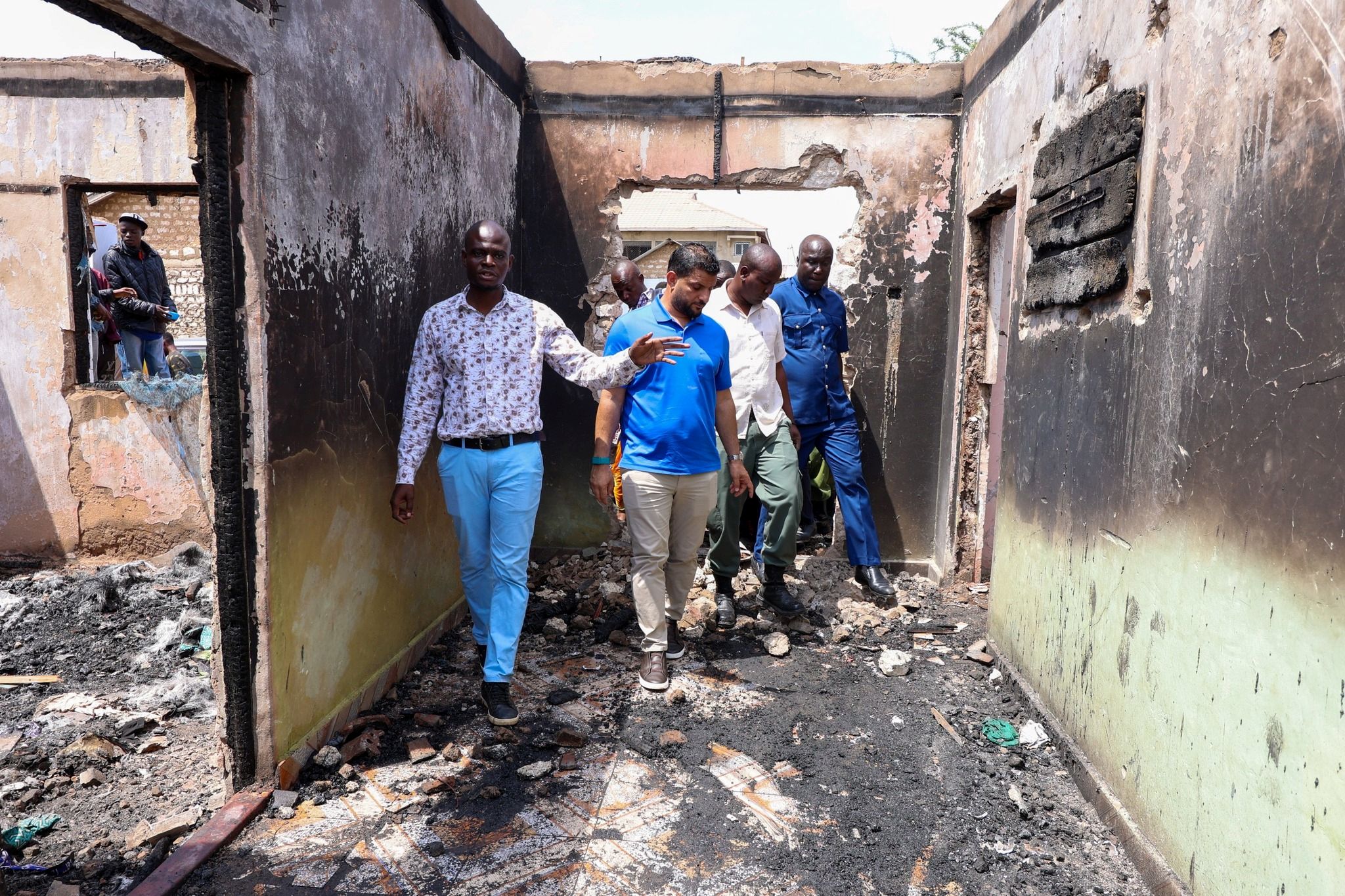

Mombasa county assembly speaker Aharub Khatri [blue T-shirt] inspects a house razed by fire in Approved area of Shika Adabu ward in Likoni on August 4 / BRIAN OTIENO
New constructions in Mombasa will not be allowed to start operations until county officers certify there are enough fire safeguards.
The county will engage stakeholders to enable ‘Fire Safety Clearance’ for residential buildings, especially multi-unit and informal dwellings.
“This will involve inspecting fire exits, firefighting equipment and checking for common electrical hazards before a certificate is issued,” Transport executive Dan Manyala said.
This comes after Manyala led a meeting with authorities, which also included officers from the Kenya Power and Lighting Company, National Youth Service, county fire and rescue services department and the county inspectorate, among others.
“In the wake of frequent fires blamed on various faults, the county will be enforcing existing legal and administrative frameworks while at the same time implementing new strategies to contain the situation,” Manyala said at his office on Friday.
According to the executive, there were 16 fires in Mombasa County in July alone, with most affecting residential buildings.
During that period, seven residential buildings were razed, while commercial and gas premises and vehicles accounted for two fires each. One fire was caused by the burning of rubbish.
So far, 12 fires have been reported in August.
The county’s process for issuing construction permits includes a review by various units, including Fire, Structural and Public Health.
The process also includes the issuance of an Occupation Certificate, which certifies a building’s compliance with applicable codes and laws.
“We will be proposing post-construction enforcement of these permits, periodic renewals and inspection of ageing buildings,” Manyala said.
Weak enforcement has partly been blamed for the fires.
“Inspection of electrical and plumbing systems as a condition for issuing ‘Repair Works Permits’ for minor refurbishments by agencies concerned will be enforced thoroughly,” the transport executive said.
The county will continue to strengthen campaigns on common household fire hazards, such as faulty wiring, overloaded outlets and improper use and storage of gas cylinders.
The campaigns will also incorporate information on how to report suspected violations.
A risk-based inspection programme will be implemented, prioritising inspection of older buildings, high-density residential areas and buildings and areas with a history of fire incidents.
Manyala said the county will create a dedicated channel for fire safety complaints and violations.
“This will allow for timely reporting and a provision for anonymity,” he said.
Landlords or property owners who fail to comply with fire and safety regulations will face substantial penalties.
To help in fire response preparedness, Manyala said the county has acquired 58 new breathing apparatuses and 48 firefighting tunics (fire jackets).
There are four operational fire engines with three fire stations.
“The Kiembeni fire substation is almost complete. This will cater for the larger Kisauni subcounty,” Manyala said.
The county has also undertaken extensive repairs to the fire stations, including drilling a borehole at the Changamwe substation, ensuring consistent water supply.
Fire drills have raised public awareness on what to do in case of an emergency.
“That is why we have not had any deaths or injuries in the last few months despite the increased incidents.”
Kenya Power operations and maintenance engineer in charge of Mombasa, Kennedy Safu, said the recent surge in fire incidents was attributable to many factors and not electric faults alone.
“There are many players that have a responsibility in ensuring installation safety and other measures to ensure the safety of the public,” Safu said.
A multi-sectoral team has been formed to come up with an action plan to reverse the trend.
Transport chief officer Ali Shariff said stakeholders, including residents, must work together to ensure fires are reduced.
“The county alone cannot stop these incidents. We need other players to work with us in unity. We have realised some of the fires are caused by electrical faults while others are caused by other factors,” he said.
He noted that the public should be sensitised on actions they need to take to protect themselves from or prevent such hazards.
“Safety begins with yourself—you as the person living in the house and as the person running a business. You need to take precautions first,” Shariff said.












